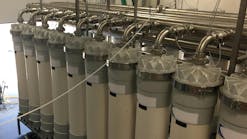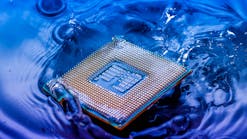Wastewater regulations European industrial dischargers need to know about in 2025
Industrial facilities across Europe are bracing for a wave of new wastewater regulations. The question is: Are you ready for these changes?
This year, the regulatory landscape is shifting to demand more efficient, transparent and sustainable practices. Let’s dive into what’s changing, why it matters and how you can stay ahead in 2025.
Why wastewater regulations are tightening in the EU
Protecting water resources: Our water bodies are under pressure. Pollution from industrial wastewater threatens ecosystems, drinking water supplies and biodiversity. New EU regulations aim to safeguard water quality and preserve natural watersheds. In Europe, the Water Framework Directive sets ambitious goals for EU water bodies to maintain good health.
Global commitments and climate goals: Global agreements like The Paris Agreement and UN Sustainable Development Goals (SDGs) are setting targets for net-zero emissions and a blueprint for sustainability globally. Wastewater management is a critical component of these environmental objectives.
Land application and hauling challenges: Limited land availability and growing restrictions on sludge application and hauling are driving facilities to rethink traditional disposal methods. Onsite solutions are becoming essential.
Public accountability and transparency: As environmental awareness grows, the public demands transparency and accountability from industries. Facilities now face reputational risks alongside regulatory penalties for non-compliance.
Key wastewater regulations to know in 2025
Urban Wastewater Treatment Directive (UWWTD):
- The updated UWWTD mandates urban wastewater treatment plants to achieve energy neutrality by 2045 and introduces stricter thresholds for pollutants like nitrogen, phosphorus, microplastics and pharmaceuticals.
- Industrial facilities must reduce pollutant loads (e.g., COD, BOD and TSS) in their discharges to avoid higher surcharges and relieve the burden on municipal plants.
- Polluter pays principle — the industrial discharger is responsible for paying for any advanced treatment of the micropollutants discharged
- How it affects industrials: Industrials will need to reduce pollutant concentrations prior to discharging to urban treatment facilities to aid in reducing energy requirements for the facility as well as meet overall stricter discharge regulations on their wastewater.
Industrial Emissions Directive (IED)
- Emphasizes the adoption of Best Available Techniques (BAT) to minimize emissions, including pollutants in wastewater discharges.
- Facilities must meet stricter standards for hazardous substances and implement advanced monitoring technologies.
- Greater protection for citizens by enabling the right to seek compensation for any health effects caused by illegal pollution.
- How it affects industrials: Compliance will require significant investments in BAT technologies and upgrades. There will be a greater emphasis on innovative technologies for the treatment and monitoring of wastewater.
Circular Economy Action Plan (CEAP)
- Promotes water reuse, resource recovery and sludge reduction as part of the EU’s Green Deal.
- How it affects industrials: Industrial facilities are encouraged to implement water recycling systems and minimize waste to align with circular economy principles.
Microplastics and emerging contaminants
- The EU aims to reduce microplastic releases by 30% by 2030. They aim to do so by reducing plastic pollution, restricting the use of intentionally added microplastics to products and reducing unintentional microplastic releases
- New measures under multiple directives, including the UWWTD, require advanced treatments to address microplastics and pharmaceutical residues in wastewater.
- How it affects industrials: Facilities should employ advanced treatment to remove the pollutants prior to discharge.
Land application and hauling restrictions
- Growing restrictions on sludge hauling and land application due to limited land availability and environmental concerns.
- The Sewage Sludge Directive is increasing the amount of sewage sludge used in agriculture while minimizing the concentrations of toxic chemicals and heavy metals being applied to the soil
- How It Affects Industrials: Facilities should invest in onsite treatment systems that minimize sludge production and the need for hauling. The avenues for sludge disposal will become more limited. This is especially true for industrials where toxic chemicals and heavy metals inhibit agricultural application and require incineration.
Key takeaways for industrial facilities
Navigating the tightening regulatory landscape will require industrial facilities to take proactive steps. These regulatory changes all follow the same overarching directive to limit pollution discharged to the environmental and preserve natural resources.
Staying ahead of the curve
To reach the increased efficiency, accountability and innovation set forth by these new regulations, industrial facilities must prepare and stay ahead of the curve:
- Proactively upgrade systems: Future-proof operations by investing in modular systems that adapt to emerging regulatory requirements.
- Collaborate with experts: Partnering with wastewater treatment as a service providers, like Aquacycl, brings innovative technologies for wastewater treatment to your facility without the hassle of managing an onsite system while ensuring compliance under changing regulations.
- Be in the know: Subscribe to our newsletter and follow us on socials for the latest updates on EU regulations and innovative solutions to transform your wastewater management


